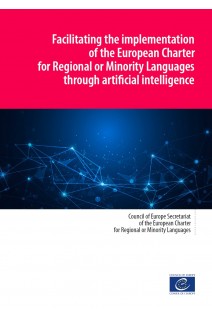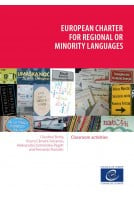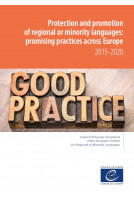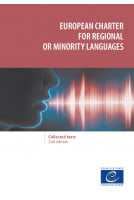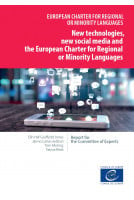Introduction 1. General reasons for using artificial intelligence (AI) to facilitate the implementation of the Charter
2. Machine translation
2.1 Different methods for machine translation
2.2 Use of already existing applications
2.3 Developing new applications
3. Other natural language processing (NLP) applications and their use for the implementation of the Charter
3.1 Use of regional or minority languages in private life (Article 7.1.d)
3.2 Use of regional or minority languages in education (Articles 7.1.g, 8.1.f.ii, iii)
3.3 Use of regional or minority languages by judicial authorities (Articles 9.1.a.i-iv, 9.1.b.i-iii, 9.1.c.iiii, 9.1.d, 9.3)
3.4 Use of regional or minority languages by administrative authorities and public services
3.4.1 Chatbots (Articles 10.1.a.i-iv, 10.2.a, 10.2.b, 10.3.a-c)
3.4.2 Smart search (Article 10.2.g)
3.4.3 Speech synthesis for street name announcements (Article 10.2.g)
3.4.4 Machine translation (Articles 10.1.a.i-v, 10.1.b, 10.1.c, 10.2.a-f, 10.3.a-c, 10.4.a)
3.5 Use of regional or minority languages in the media
3.5.1 Automatic generation of subtitles (Articles 11.1.a.i-iii, 11.1.c.i-ii)
3.5.2 Automatic information extraction (Article 11.1.e.i-ii)
3.6 Use of regional or minority languages in cultural activities and facilities
3.6.1 Data structuring (Articles 12.1.g, 12.1.h)
3.6.2 Machine translation (Articles 12.1.a, 12.1.b, 12.1.c)
3.6.3 Automatic generation of subtitles (Articles 12.1.b, 12.1.c)
3.7 Use of regional or minority languages in economic and social life
3.7.1 Sentiment analysis (Article 13.1.c, 13.1.d, 13.2.b)
3.7.2 Machine translation (Articles 13.1.a, 13.1.d, 13.2.a, 13.2.b, 13.2.d, 13.2.e)
3.8 Use of regional or minority languages in transfrontier exchanges (Articles 7.1.i, 14)
Outlook
